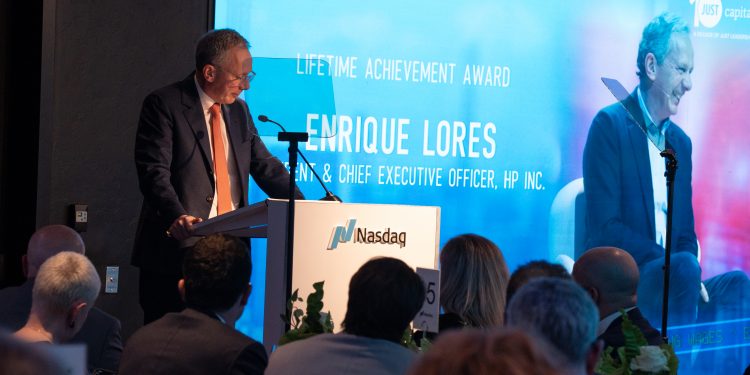3 Guiding Principles for Companies Giving Back to Their Communities
Americans agree that communities – local and global – represent one of business’ core stakeholders, and that companies should make concerted efforts to give back to the communities where they operate, and where they have the greatest impact. Providing local support through volunteering and community programs, along with charitable giving efforts, are essential to being an active member of a community, according to the public.
These efforts enrich the communities that companies most deeply affect through company operations. Not only are they the just thing to do, they also help foster greater employee engagement and sense of purpose, as well as create a meaningful connection to these communities.
The benefits are clear, but there are some things corporate leaders should keep in mind before giving back. Here are a few guiding principles for corporate giving – a key element of how we track just business behavior in our annual Rankings of America’s largest publicly traded companies.
Guiding Principle #1: Find Out What Communities Need
Corporate giving programs can be haphazard, leaving them prone to charges that they exist purely for PR value. The fact is, there’s no established criteria for which organizations a company should support and how much they should give. But companies should have some rationale, and they should be transparent about it.
Too often, corporate giving policies are written from headquarters, without a real understanding of the realities on the ground. There’s a presumption that headquarters know better what people need than local communities themselves. That’s why it’s important to start by asking communities about what they need.
Companies can host town halls, form citizen advisory boards, or conduct surveys to gauge what’s important to communities. Zillow’s The Home Project, which addresses housing insecurity and homelessness, for example, involves the company partnering with local organizations, listening to their needs, and supporting partners in the cities where Zillow has offices.
Many companies let local franchises and employees have a significant say in choosing which causes to support. One global hotel chain, for example, gives charity budgets to managers at each of its properties and empowers them to give based on where the need is greatest in their community. But local-centric is not the only approach, says Eric Kessler, founder of Arabella Advisors, a philanthropy consulting firm that counts the hotel chain as a client.
The best corporate philanthropists, Kessler says, are “deeply passionate about an issue that affects the employees, customers, or geographies in which they work.” Personal care product company Kimberly-Clark, for example, launched its “No Baby Unhugged” program in 2010 to ensure babies get the “hugs” they need to thrive – including actual physical snuggles and specially designed products for the littlest babies. The company also collaborates with diaper bank networks to ensure families in need have access to diapers and wipes.
CVS Health is another great example, announcing in June 2019 a new $50 million campaign to help stop teen vaping and create the first tobacco-free generation.
But it’s even better when companies identify where their operations have a negative impact, and direct dollars there in an effort to remedy the situation. For example, Microsoft announced in January 2019 that it would invest $500 million into affordable housing in the Seattle area, which is home to both Microsoft and Amazon. Microsoft’s investment is the most ambitious effort by a tech company to date to address the inequality and gentrification that has spread in communities where the tech industry is concentrated.
When measuring how companies give back to their communities, JUST considers both the amount given and the ratio relative to pre-tax profits.
Want to read more stories like this?
Our FREE weekly newsletter about the future of capitalism and the movement to build a more equitable marketplace in America.
Guiding Principle #2: Involve Your Team
Employees live in the communities where companies operate – so asking them for support in identifying important causes is essential. Many companies provide opportunities for employees to engage closely with the charitable giving process, which can provide a deeper sense of purpose and morale in the workplace.
At JUST, we track whether companies offer matching programs to their employees – supporting and amplifying the causes identified by employees. Such measures also empower workers to give charitably. Based on our analysis last year, approximately 46% of companies offer this kind of program.
We also look at another key way that companies can support employees that are involved – through volunteering. Many companies offer paid time off for employees to volunteer and/or tie charitable grants to employee volunteering – such as a “dollars for doers” program that awards cash grants to approved organizations based on the amount of time an employee volunteers. In 2020, around 53% of companies provided some form of volunteering time off and 20% of companies offered grants for organizations where employees volunteer.
These initiatives allow employees – often members of these communities themselves – to identify what causes matter most, become more deeply engaged with the charitable giving process, support local charitable efforts, and find greater purpose at work.
Guiding Principle #3: Close the Loop
The act of giving in itself is deeply important, but it’s also essential for companies to assess whether their charitable efforts served their intended purpose. Companies should work to follow up with their communities, to find out whether their actions have concretely improved or made a significant dent into the issue they are combatting. They should aim not simply to push money toward an issue, but work collaboratively with community leaders and constituents to ensure that it’s contributions are having a meaningful impact.
A key element of closing the loop is establishing transparency around the giving process and its impacts, which allows stakeholders – from community members to workers to investors – to gauge whether a company’s contributions made a difference. Charity Navigator, for example, provides clarity around the ways that charities are spending their donations, helping to demonstrate how and whether corporate contributions have truly driven change.
No matter the motivations behind giving — fostering local education, improving local infrastructure, or mitigating a company’s negative impacts — transparency is essential. “Most big companies are not transparent about what they’re trying to accomplish, much less whether they’ve accomplished it,” Kessler says. “If they were transparent about their intention, that would be a huge step forward.”
The bottom line? Giving back to their communities must be table stakes for corporate leaders – but it must be undertaken with care and consideration to ensure that giving efforts actually address the needs of local communities, that employees have the opportunity to be involved, and that the results of giving are made clear through transparent communication and thoughtful evaluation.
To stay up to date on all the latest moves companies are making to prioritize communities, workers, customers, and more, sign up for our free weekly newsletter, The JUST Report, today!






